Indoor plants starting with the letter g - let’s take a closer look at the original specimens
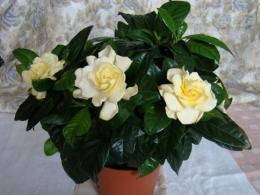
It can be difficult for an inexperienced gardener to decide and choose a flower to place in his own home. You can get lost in the variety and multiple offers. We have selected the most memorable indoor plants starting with the letter g and invite you to familiarize yourself with them.
Content:
Gardenia
Gardenia - an unusually elegant flower that belongs to the madder family. In terms of sophistication, it is compared to camellia. In addition to its chic appearance, it has a charming scent. Just one pot of the plant will fill the entire room with a subtle aroma.
In nature, gardenia grows on the Ryukyu Islands, as well as in the forests of Japan, India and China. Popularly called "cape jasmine" Under natural conditions it reaches a height of 2 m, in rare cases – 3 m.
The leaves of the plant are dark green in color, shiny, with a dense texture and pointed tips. Indoor specimens look neat and compact, the height is 0.5 m, and are beautiful even in the absence of flowering.
The plant owes its name to A. Garden, a doctor and naturalist from America. It was he who cultivated this species.
There are specimens with white and cream flowers, regular or double. The diameter of each is up to 10 cm. The flowers are collected in inflorescences or arranged singly. They emit a pleasant aroma.Flowering occurs from July to October. Under good conditions and care, the plant becomes covered with gorgeous buds.
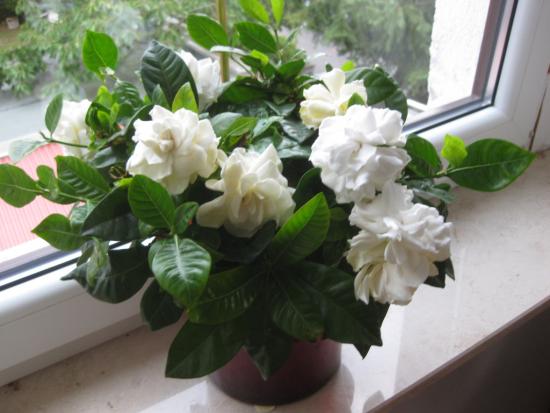
More than 250 species are found in nature gardenias. However, flower growers grow only a few varieties: profuse, regal, jasmine, radicans, Kula, citriodora. In indoor conditions they contain mainly jasmine gardenia. Large double white flowers are formed on its shoots.
Here's what you should know about gardenia:
- Among flower growers it has gained fame as a demanding plant.
- Does not like rearrangements and changes in location. Until death.
- Prefers light, but gets burned when exposed to direct sunlight. The ideal place is a bright room on the south side.
- The optimal temperature is 18-22 C.
- Cold and drafts cause flowers to fall off. It has a hard time surviving sudden temperature changes.
- Avoid watering with cold water. The plant will react by yellowing the leaves.
- In a shaded place, the buds may dry out and fall off. Rooms on the north side require an additional light source.
- At temperatures above 24 C, weak shoots begin to grow, on which buds do not form.
To make friends with a flower, you will need to make an effort and customize the content. Gardenia can complement any interior. A beautiful, neat bush will decorate the room, make it cozy and fill it with a pleasant fragrance. Will be an unforgettable holiday gift.
Gloxinia
Famous perennials starting with the letter g: gardenia, hibiscus, glottiphyllum, graptopetalum. Long-living plants include gloxinia, which is characterized by a tuberous root system.
Up to 20 species of gloxinia grow in the wild.Homeland: Brazil, tropical South America. Grows on river banks, slopes, rocks and forest clearings. The wild plant is more like a shrub or grass. Artificially bred hybrid varieties that are adapted to life at home are grown indoors.
The flower began to be cultivated thanks to the work of the German doctor and botanist Benjamin Gloksin. While traveling in Brazil, he noticed an unusual flower that looked like a large bell, and made a detailed description. This is how the flower got its name.
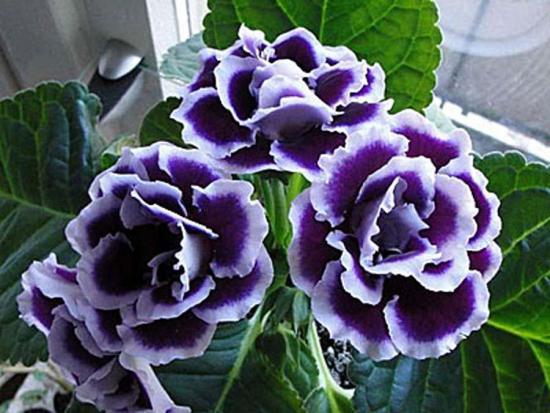
Gloxinia is famous for its variety of shapes and colors of buds. Beautiful flowers have made the plant extremely popular among professionals and amateurs. Some gardeners collect this species. There are varieties with smooth and double flowers of purple, white, blue, pink, large and miniature sizes.
The leaves are velvety green or dark green in color. There are up to 50 flowers on one plant. The spectacle is amazing and unforgettable. A subtle soft aroma emanates from the foliage.
There are quite large gloxinias, which complicates the task of the gardener and makes it difficult to locate in small apartments. However, there are also dwarf specimens. Height ranges from 10 to 70 cm.
Gloxinia has a pronounced dormant period in winter. Its ground shoots die off, and the root system “falls asleep.” Those who do not know this feature of the flower may think that it has died. In spring there is an awakening, leaves grow, then the stems lengthen. Flowering begins in May and stops in September. In autumn you can get small seeds.
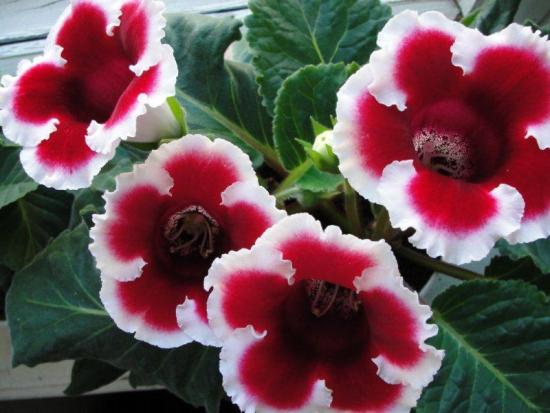
Caring for gloxinia is simple and consists of the following:
- Gloxinia is thermophilic, the temperature suitable for it is 18-23 C.A good solution is to place the pot in the kitchen, where it is warm and has optimal humidity.
- Be sure to use settled water for irrigation. Water tender young shoots carefully. The liquid should be lukewarm.
- An increased need for moisture occurs before hibernation. In autumn, watering is carried out more often.
- The plant does not tolerate drafts.
- With enough light, the leaves will grow to the sides, and this is correct. When there is a lack of lighting, they stretch upward.
- The flower should be fed once every 1.5-2 weeks from spring to August.
What to do during winter dormancy? Gloxinia must be placed in a cool, dark place. Some gardeners prefer to store tuber in a plastic bag. Use the vegetable compartment of the refrigerator for storage.
Glottiphyllum
An unusual yellow flower starting with the letter g is glottiphyllum. This is a perennial plant succulent, which can grow in areas with an arid climate, belongs to the Aizov family. Features a wide variety of shapes.
The plant grows in southern and southwestern Africa. For growth, flowers choose the Karoo plateaus, semi-desert areas and dry river beds. The soil in these areas is fertile, although arid. Glottiphyllum tolerates temperature changes well. In the natural environment, the air cools to 0 C at night.
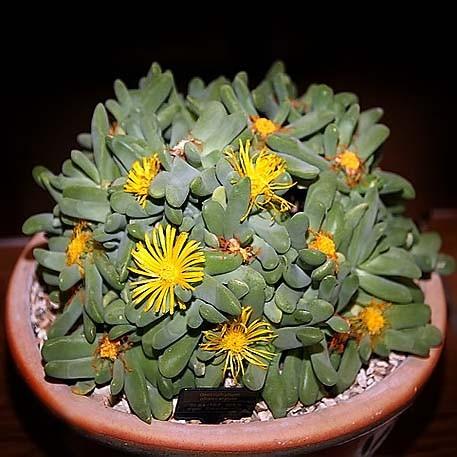
There are about 20 varieties and subspecies. The plant has a shallow root system; water is accumulated and stored by shoots. The leaves are lush green or dark green. Sometimes there are specimens with a blue or reddish tint. Some have specks and dashes. Sheet plates are round and cylindrical.
Single flowers grow on a short stalk, with a bunch of stamens inside. The bud itself is quite large. The flower looks like a large dandelion and exudes a delicate fragrance. The petals are predominantly yellow and glossy. Sometimes there are specimens that are white, golden, or with an orange tint.
An interesting feature of glottiphyllum is the two-time, albeit short-term, bloom. The first time occurs in May, and the second time in September. The fruit of the plant is a capsule filled with seeds.
Glottiphyllum is not a demanding plant; it is very easy to maintain indoors. The pot should be clay and shallow; it must have drainage holes. The plant does not feel well in plastic.
Young plants are recommended annually transplant. As they grow, it is enough to carry out the procedure once every few years.
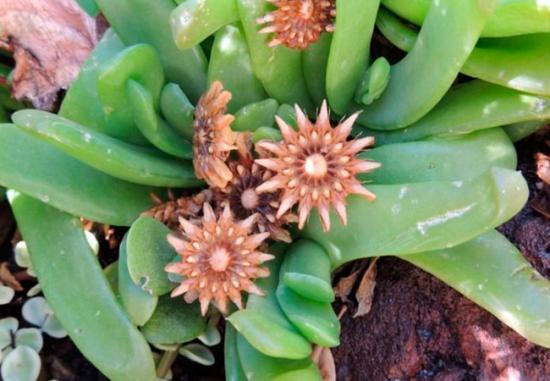
Glottiphyllum can be a significant acquisition for an avid gardener. This unusual flower will fit perfectly into your home environment.
Graptopetalum
Graceful graptopetalum will be a real pearl of the flower collection. This flower has an extraordinary appearance. Thanks to the Mexican explorer Alfredo, Lau was brought to Europe.
The plant, like glottiphyllum, is a succulent. Able to accumulate water and use it economically. Homeland - Mexico. Grows near coniferous forests in arid rocky areas.
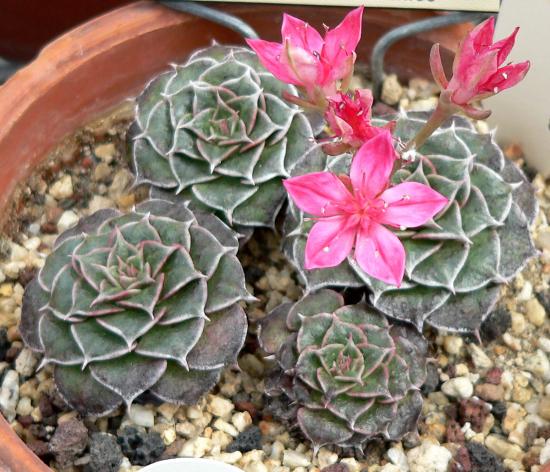
Graptopetalum can survive without moisture for a long time, but is also heat-loving. Characterized by slow growth and a long flowering period.
Graptopetalum has flat, fleshy leaves arranged in rosettes. Unusual leaves and flowers add beauty to the plant.Graptopetalum will delight the owner with long-lasting colorful flowering from April to the end of summer.
Depending on the variety, the buds are pink, white, red or blue. Yellow or cream specks and streaks may be present. The most common varieties are graptopetalum paraguayan, filamentous and beautiful.
Caring for a flower will be easy even for a novice gardener.
The plant tolerates indoor microclimate well. The main requirement of graptopetalum is the correct temperature regime. In the spring-summer season, it is advisable to warm the air to 23-27 C.
In cold seasons, the plant enters a dormant period. At this time, a temperature of no more than 15 C (but not less than 10 C) is required. The pot is placed on the northern windowsill or insulated loggia.
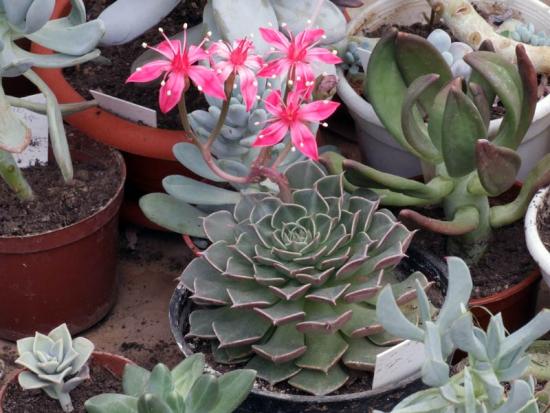
The flower tolerates poor watering and low air humidity well. Does not require spraying with water.
Graptopetalum is perfect for keeping in indoor conditions. Will become a spectacular home decoration. Also grown in greenhouses.
Guzmania
Another interesting unusual indoor flower is called Guzmania. This plant came to us from the tropics. Grows in the forests of Central and South America. More than 100 species are represented in the natural environment.
The plant is equipped with long glossy leaves, which are collected in a rosette near the roots. A beautiful bright flower appears from the center. The color is fiery red, with yellow areas. Guzmania blooms for 4 months. However, after that it dries out.
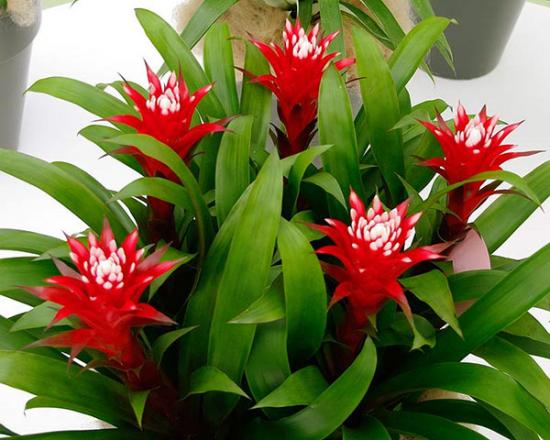
Guzmania reed is most often grown indoors. It is a herbaceous plant with soft leaves. The flower market offers compact hybrid species with a height of no more than 30 cm.
Also kept in houses Guzmania epiphytic. The leaves of the flower form a rosette resembling a glass. I fell in love not for its flowering, but for its beautiful succulent leaves.
The basics of care are as follows:
- A suitable place for guzmania is at home greenhouse or an indoor florarium. It is easy to maintain constant air humidity and temperature there.
- In the warm season, watering is increased, and in winter it is reduced.
- The ideal temperature is 19-21 C. Humid air is welcome.
- Special soil is needed - a mixture of crushed sphagnum roots, ferns and charcoal.
- To stimulate flowering, they resort to a trick. Place the guzmania in a bag of spoiled apples for a couple of days. Make sure there is no mold on the fruit. The released acetylene will promote the formation of flowers.
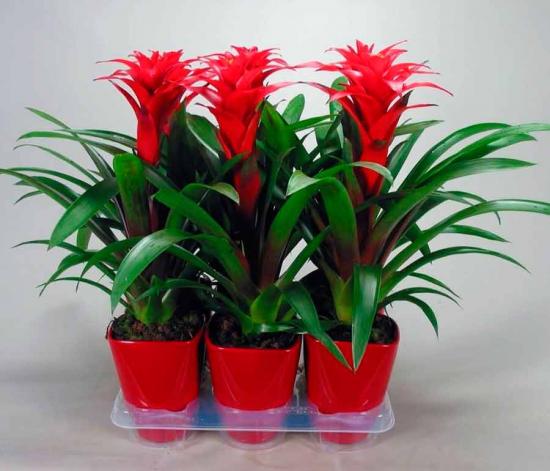
If you master the care of guzmania, the plant will delight you with its beauty and originality. A tropical flower will add to the collection of exotic representatives of the plant world.
Heliocereus
Heliocereus belongs to the family cactus, and this is one of the most extraordinary representatives of its kind. The plant consists not only of thorns, nature has provided it with long, delicate stems that can reach 1.5 m in length, and beautifully fall from flower pots. Some gardeners prefer to make supports.

Cactus It is famous for its unusually beautiful flowering in the summer season. Open large flowers of a rich pink color, up to 20 cm in size, appear on the plant. Some subspecies of Heliocereus bloom in a delicate white color.
Bright large flowers look very beautiful against the background of thin fragile shoots.
An undeniable advantage is the long flowering period. This makes heliocereus a spectacular decorative item and home decoration.The flowers open in the morning and close in the evening.
After flowering is complete cactus fruits are formed. These are prickly oval-shaped boxes of a rich red hue. The size of each is 4-5 cm. The plant is extremely beautiful even in the absence of flowers. It turns out that the fruits of some varieties are even allowed to be eaten.
You should know the following about the content of heliocereus:
- The cactus needs plenty of light. Sufficient lighting should be provided even in winter.
- During the growing season from spring to autumn, the plant is suitable for moderate temperature conditions. The most suitable thermometer values are 21-22 C. However, in the summer it is difficult to achieve such indicators. In winter, Heleocereus prefers 15-18 C.
- Poor watering is sufficient. The frequency increases slightly in spring and summer.
- The plant requires replanting every 2-3 years.
- There is no need for additional air humidification or spraying.
- The ideal container for cactus is hanging baskets. In such a container all the advantages are emphasized.
Due to its exceptional decorative properties, heliocereus often acts as indoor plants. Moreover, it is used to decorate halls and celebrations, and is used in interior design and vertical gardening. Verandas and balconies decorated with cactus look very bright.

Nowadays, flower shops offer a wide selection of products. It has become possible to house tropical flowers, cacti, and exotic specimens.
You can also ask which indoor plants are the most beautiful and popular. Before purchasing a representative of the flora for your home, inquire about the conditions of maintenance and care.
Find out more about indoor flowers, in particular about which plants are mascots for different zodiac signs:


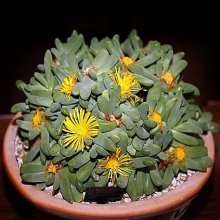
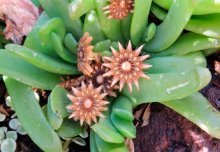
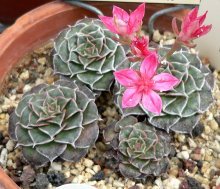
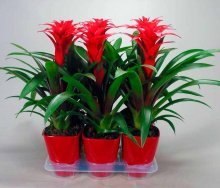
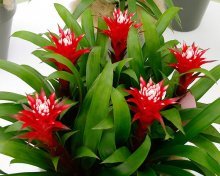
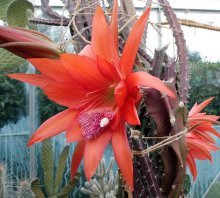
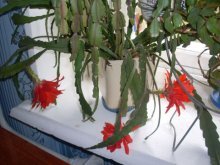
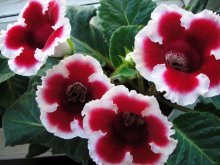

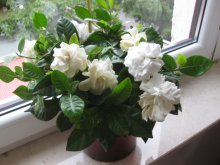

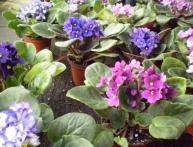

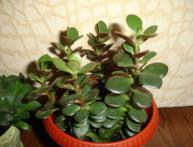
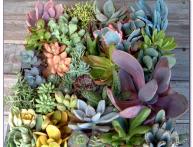
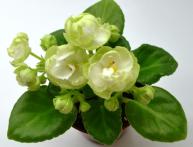
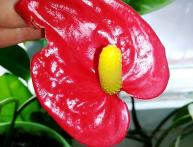
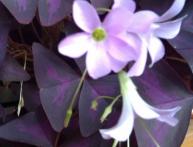
Comments
All plants starting with the letter G are very beautiful. I especially liked the first two. We have heliocereus growing at home, but everyone calls it December flower, because the beginning of flowering occurs in the month of December. It blooms profusely, with rather large, red flowers.
There is also indoor Wisteria on “G”, which is very, very beautiful, but requires special care and certain maintenance conditions, including specific temperature conditions in winter.